
Nanjo Kobo Ltd has been established in Kyoto for more than 190 years, producing orin as instruments for Buddhist practice.
Now we wish people to enjoy the sound of orin in their everyday lives, beyond a religious context.
LinNe was created with this in mind. All aspects of our production, including materials and methods were developed in-house, aiming to produce the ultimate clarity and tone, even if this resulted in parts of the process becoming more time-consuming.
LinNe strives to create new styles of orin whilst continuing to respect the wisdom and technology cultivated over many years.
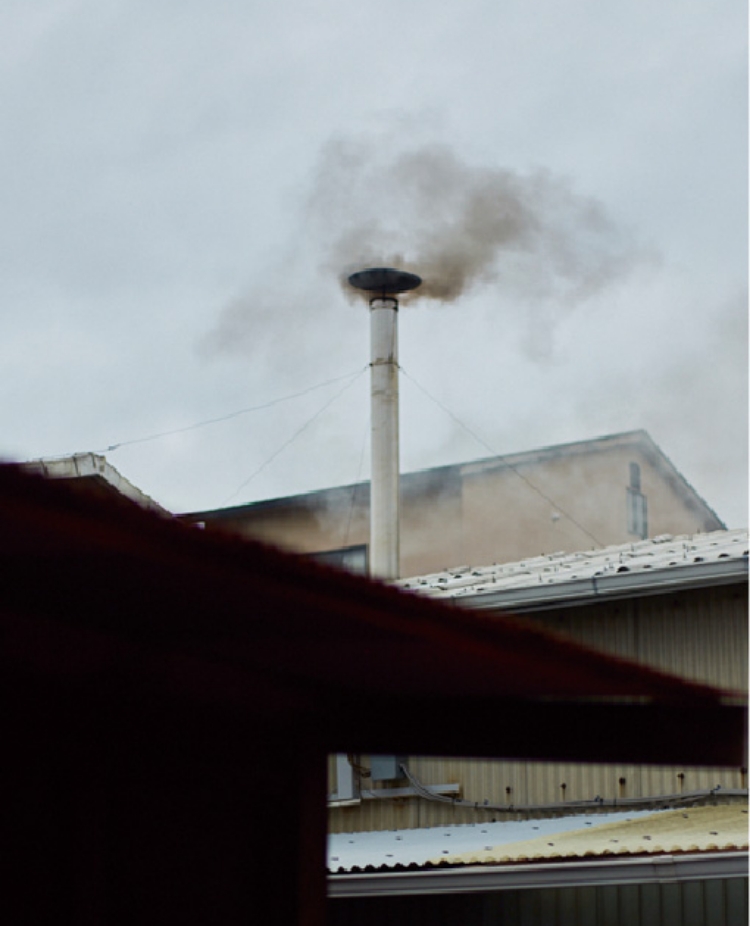
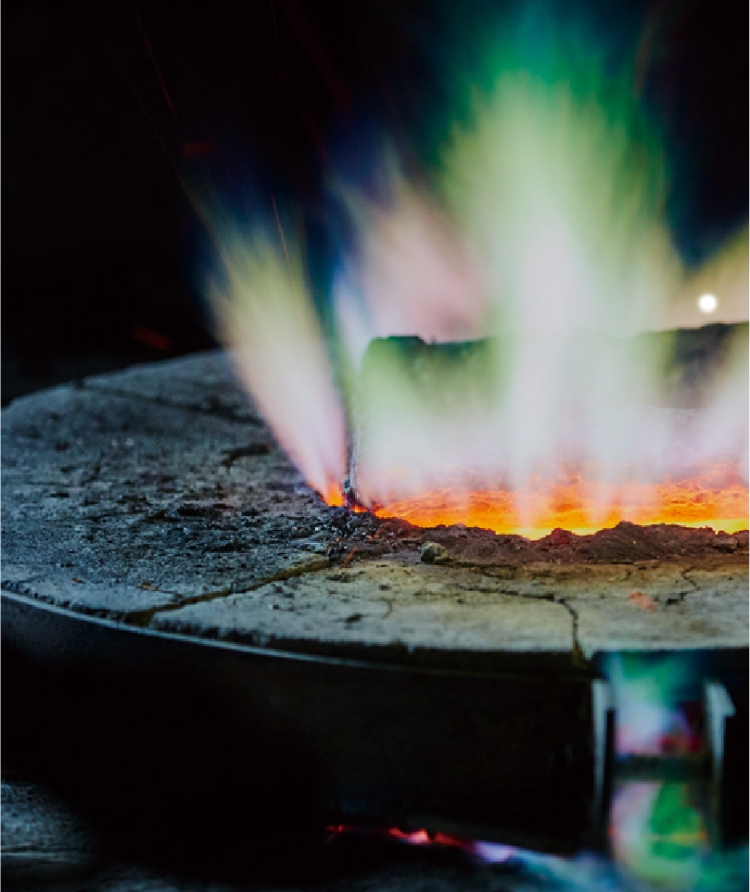
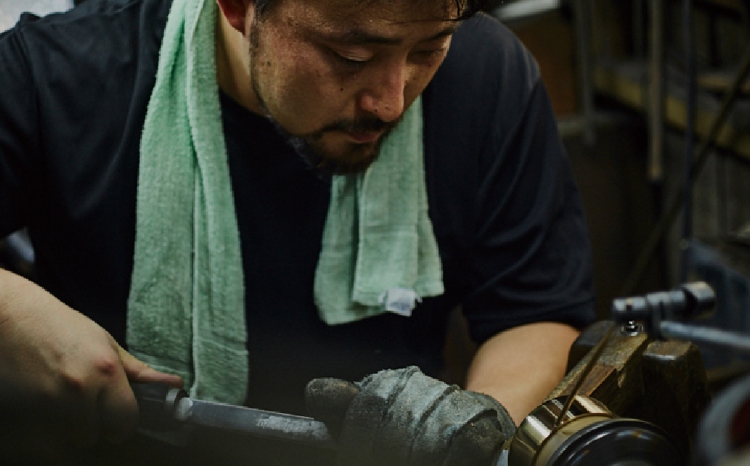
The sahari alloy used in orin-making is made from a mixture of copper and tin. LinNe focuses on a unique formula with more tin than usual to produce our orin.
This makes the alloy harder to work with, requiring a skilled technique but it increases the vibration rate of the orin to create a beautiful resonant reverberation.
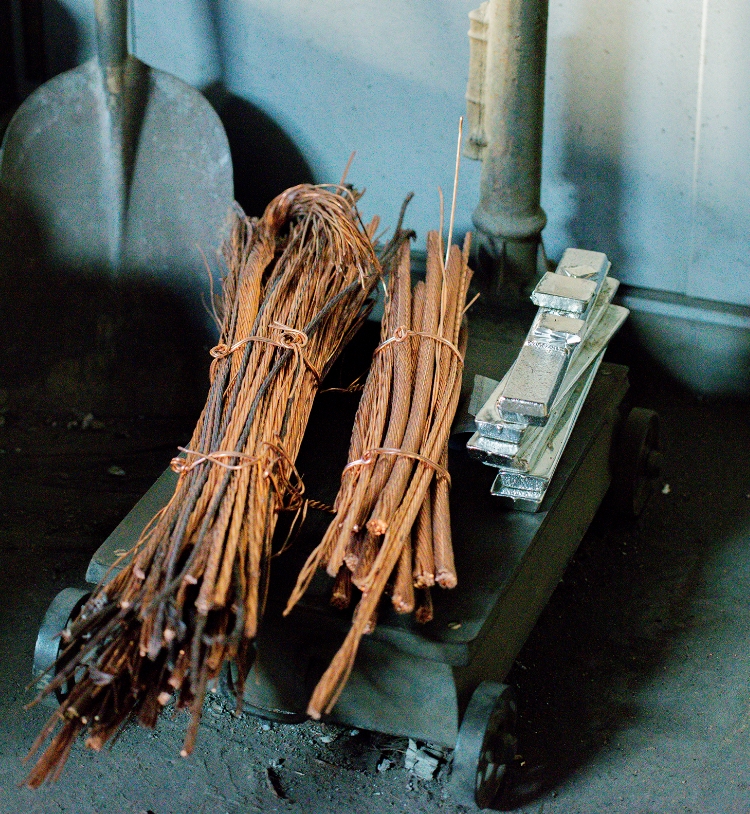
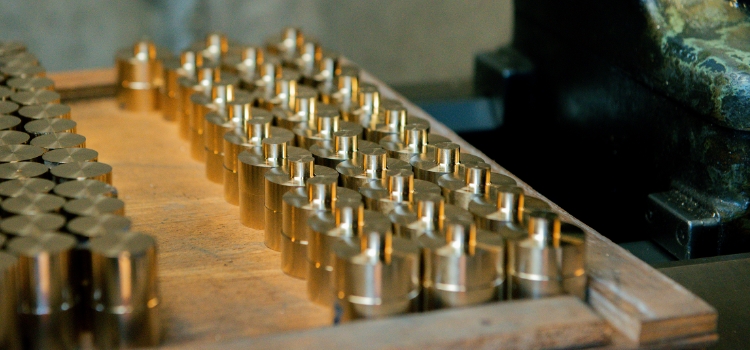
The continued search for the ultimate clarity and sound led to LinNe’s unique formula for sahari and affirmed the company’s long-standing practice of ‘casting in a fired mold’.
This method, where casting is done using handmade clay molds that have been fired in a wood-burning kiln, produces orin with a clear and resonant pitch, thanks to the high-quality embers that only firewood can provide.
The result of the company’s continuous pursuit to create beautiful sounds is the adoption of a traditional manufacturing method that is now the only one of its kind in the world.
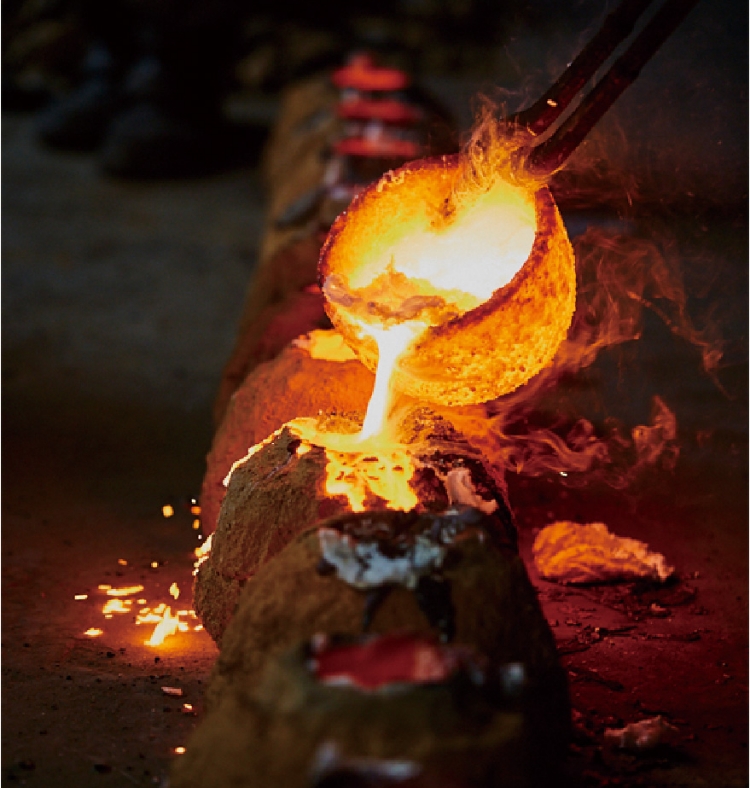
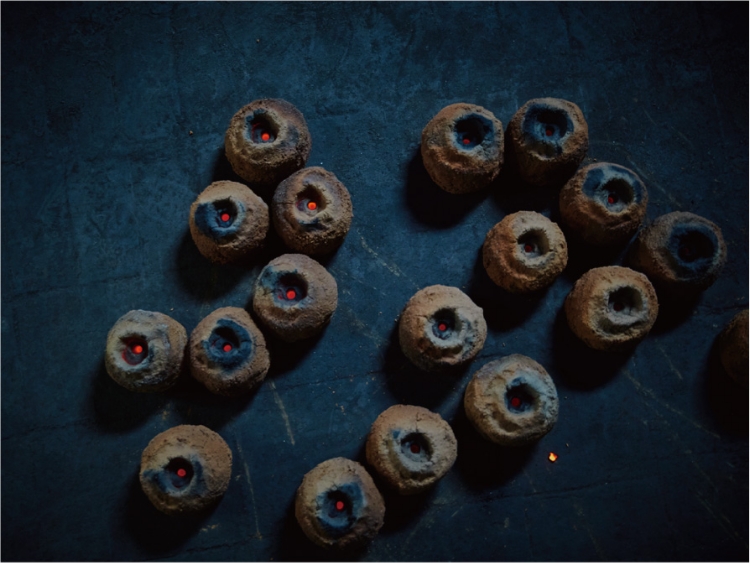
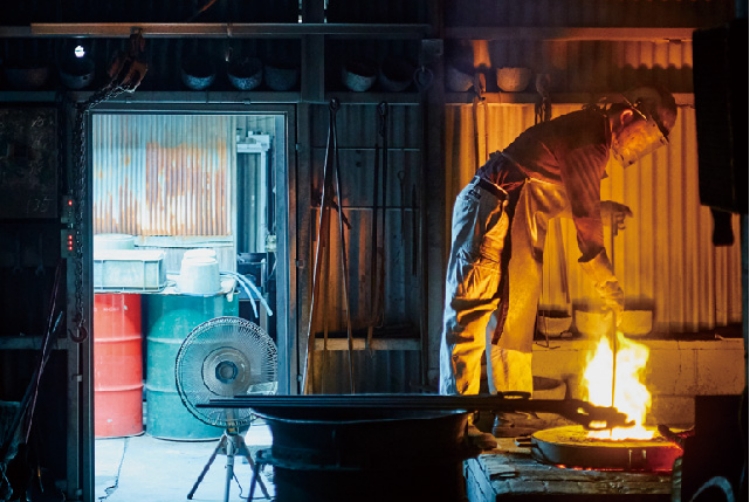
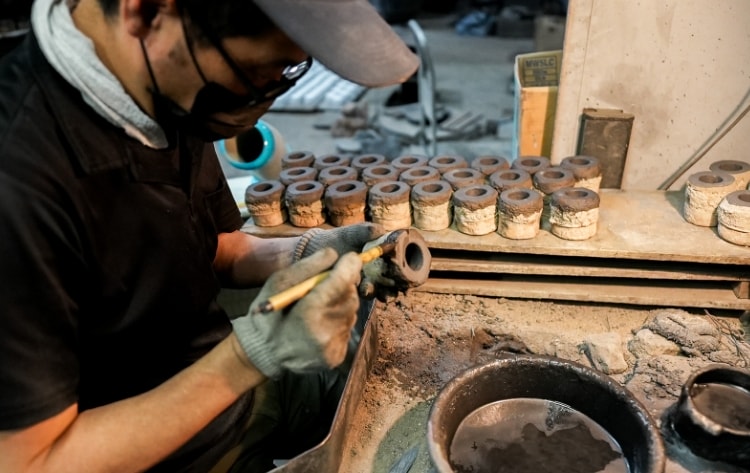 01. Mold Making
Metal-casting clay is kneaded together with other clays, shaped, and bisque-fired to form the molds.
01. Mold Making
Metal-casting clay is kneaded together with other clays, shaped, and bisque-fired to form the molds. 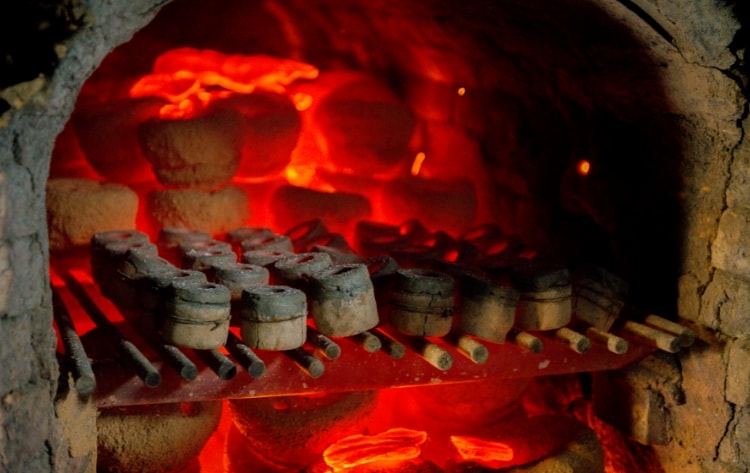 02. Firing the Molds
Dried molds are arranged in a maki-gama (wood-fired kiln) and slowly fired.
02. Firing the Molds
Dried molds are arranged in a maki-gama (wood-fired kiln) and slowly fired.
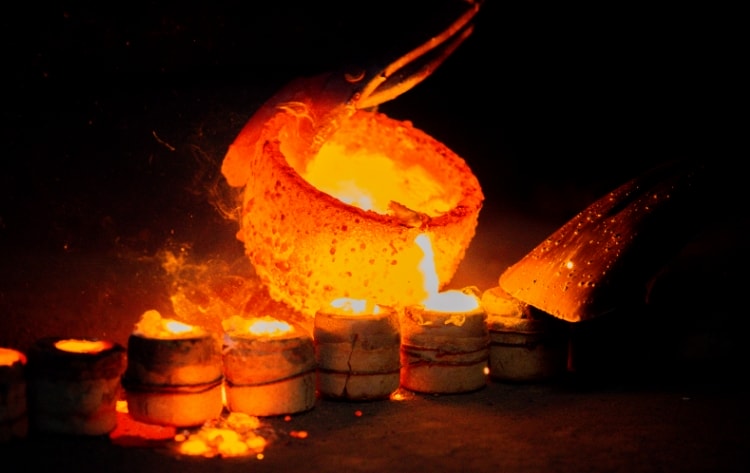 03. Casting
The molds are removed from the kiln and allowed to cool; their temperature is carefully judged alongside the molten state of the sahari alloy, and at the right moment, the sahari is poured into the molds.
03. Casting
The molds are removed from the kiln and allowed to cool; their temperature is carefully judged alongside the molten state of the sahari alloy, and at the right moment, the sahari is poured into the molds.
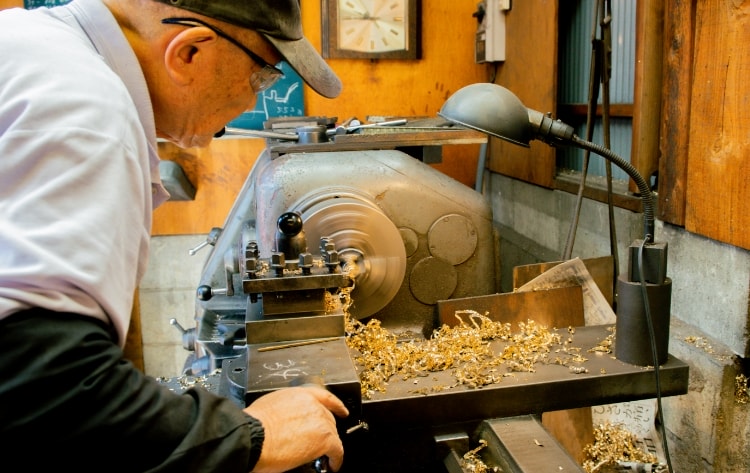 04. Turning
The kurokawa (black oxidised layer) of the cast is rough-cut on a manual lathe.
04. Turning
The kurokawa (black oxidised layer) of the cast is rough-cut on a manual lathe.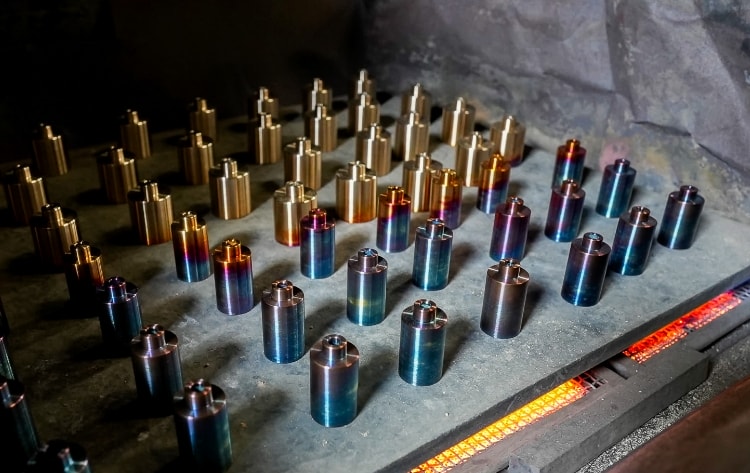 05. Finishing
The orin is polished with abrasives, and then annealed before quenching. Each orin is individually checked to assess the quality of its sound.
05. Finishing
The orin is polished with abrasives, and then annealed before quenching. Each orin is individually checked to assess the quality of its sound.
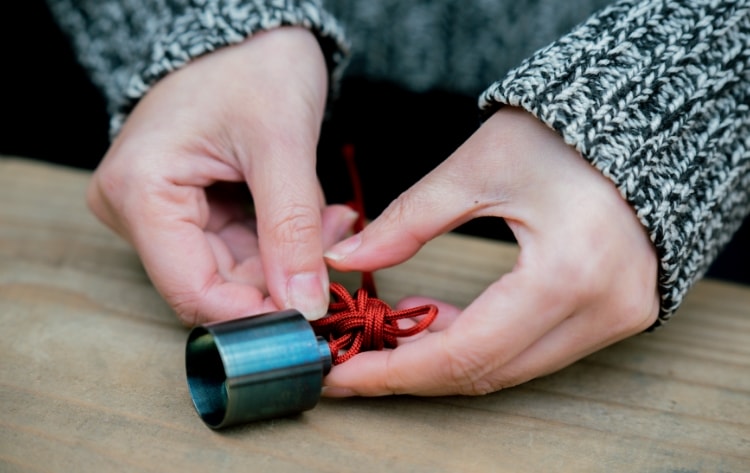 06. Kumihimo (braided cord)
A braided cord is attached to the finished orin, this completed piece is then ready to be presented to customers.
06. Kumihimo (braided cord)
A braided cord is attached to the finished orin, this completed piece is then ready to be presented to customers.